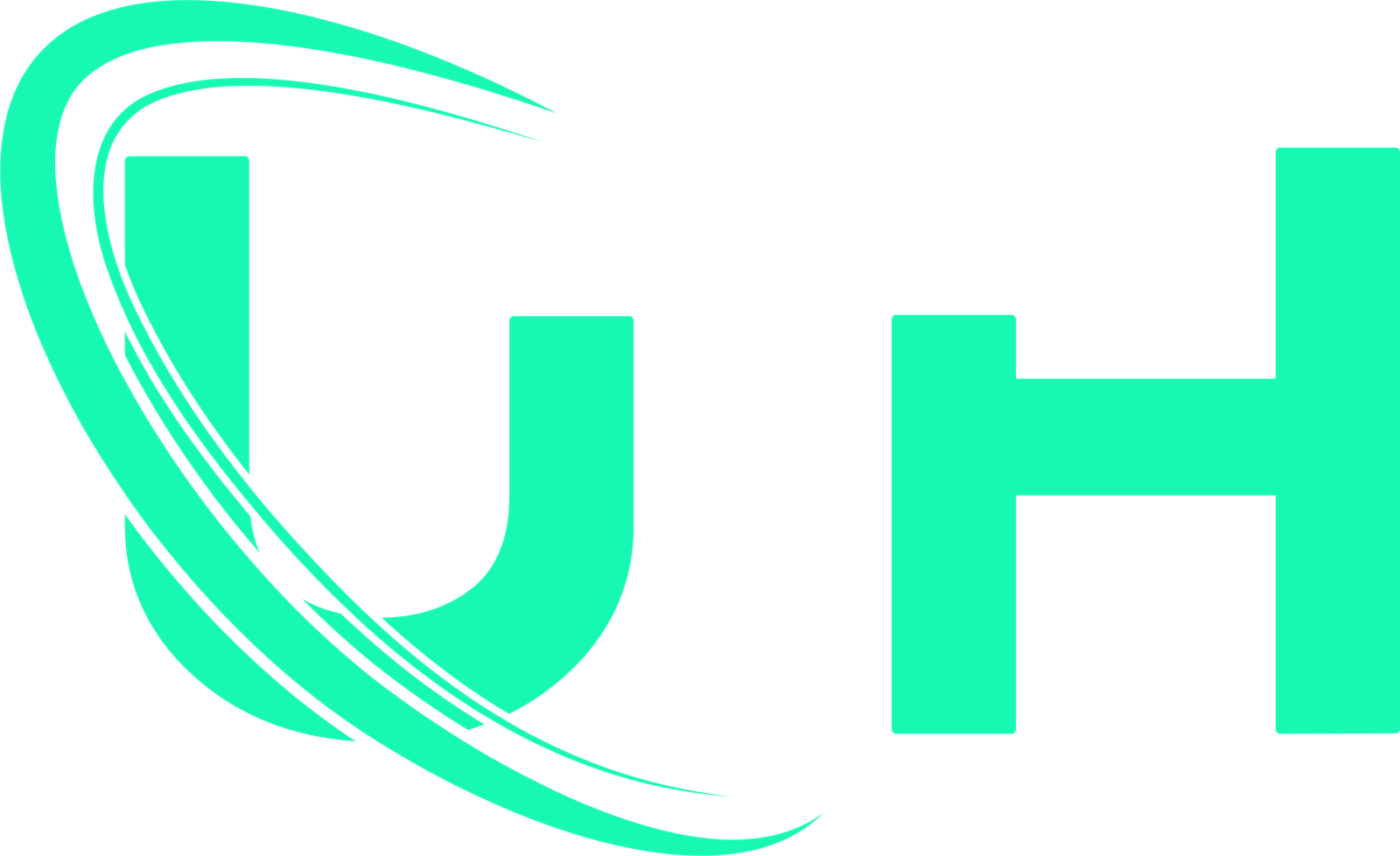Development
Is It Possible That Coding Will Be Relevant in 2025?

Is It Possible That Coding Will Be Relevant in 2025?
Coding is still important, and that won’t change for at least the next three years. Yet programming assignment help and language grammar will only get more simplistic in the future. The first step was to simply make holes in the cardboard. And then it evolved into this: 00101010101. The language has evolved to nearly mimic the English language.
There will be a rise in the use of programming languages as they become easier to learn and more like spoken languages. Instructing the devices what to do and creating new apps for them will become more widespread as computer systems continue to permeate our everyday lives. On the other hand, we shouldn’t expect AI to take over programming jobs like app writing any time soon. Future or not, there will always be a need for human developers. If you need help with your technical homework, hire a professional IT writer to do your coding assignment.
In order to answer the question of whether or not coding will be relevant in the year 2025, we may try to foresee what kinds of situations will benefit most from learning the necessary skills. The technology landscape will undergo a dramatic shift as we witness the real-world applications of AI and ML. It will have an impact on code, but we can’t say for sure that it will make coding obsolete. There is, however, no question that developers will play a different role in the language of the future. Therefore, let’s take a look at the end of programming as we know it.
Future Programming Languages 2025: What to Anticipate?
Anybody who works in the field of software creation has undoubtedly heard of the breakthrough approach known as “low code, no code.” To create innovative business software, software solutions, and web applications with minimal or no coding, a new methodology has emerged: low code. Low-code automation platforms allow developers to add complex features to their apps without having to learn and memorize a new programming language. Instead, they rely on visual editors, drag-and-drop interfaces, and pre-built logic.
The technique’s apparent automation benefits, such as increased ROI, improved customer experience, an AI-driven approach, reduced reliance on IT, data-driven decision-making, and more agility, are rapidly expanding its application across industries.
The corporate sector is notoriously hesitant when it comes to embracing new programming languages or minimal code methods, despite the tremendous pace of technical innovation. Most large B2B companies are still using the same legacy technology. Reasons for this include its portability and the low cost of modification.
In 2020, the most popular programming languages will be Java, JavaScript, and SQL, which will allow for a simple resolution to the problem. But, the answer takes into account things like present demand, the company’s standing in its field, and typical market earnings.
The Most Popular Programming Languages of Today and Tomorrow
Here is a rundown of some of the most in-demand programming languages.
Golang
This is a promising new programming language developed by Google in 2009. The technological community has been debating the merits of Go on a regular basis since 2016. Notation is kept to a minimum and the language is kept simple. It is predicted to become a popular trend in the near future. In the end, if Google made it, it would be trendy.
Rust
Nowadays, this language is used by the second most developers. One of the most widely used programming languages, Mozilla Firefox has been around since 2014.
Swift
This is a fundamental language for making apps for the iOS platform. It’s largely replaced its predecessor, Objective-C. As long as Apple is a household name, Swift will be one of the most in-demand languages for developers. As an added bonus, it is freely available to the public. Because of this, a huge group of dedicated programmers is always making advancements. It has rapidly risen to prominence as a top functional programming language.
Clojure
While it is based on the Lisp programming language, Clojure is more of a functional programming language and will likely be in high demand in the near future. The .NET framework and Java can be used together.
Java
The latest update to Java 8 is more important than this widely used programming language. By 2025, Kotlin could emerge as another big Java-related trend. It’s gaining traction among Android programmers, and it could end up being a much-anticipated feature in the Android environment.
Conclusion
Despite the many openings, programmers would be wise to remember that automation is where the industry is headed. As far as the eye can see, automation is taking over every sector, and with the help of coding assignment help, it will only accelerate. Developers, in order to keep their irreplaceable status in the IT business despite the advent of new technologies, must evolve and enhance their skills in tandem with these shifts.

Game Development
Game Development Services Turn Ideas Into Remarkable Experiences

Game development has become a powerful and progressing industry worldwide. It has experienced different trends and the advent of revolutionary technologies daily. The contest of envisioning innovative ideas for their projects starts a perfectly exhilarating journey.
Game development services involve steering a landscape gleaming with creativity, invention, and excellent dedication. This journey needs to explore undiscovered areas of storytelling, visual attractiveness, and gameplay mechanisms. It captivates players and provides a long-lasting impact on the gaming world.
Essential aspects to create a successful and profitable game
- Express simple and interesting thoughts through stories to attract a player to play the game and come back again.
- Increase competition and difficulty in the game to maintain the interest of a player. Experts at a game development company perfectly handle developing an engaging game.
- The compatibility of your developed game with different platforms will make it more reachable to users. You need a hybrid model depending on the target market for the development of a game.
- Working on game design differs from flat to comic or 3D layout design. The story of the game has become pivotal in determining the design of the character, appearance, and the overall environment.
- Game development involves designing tools depending on the development project type. Developers use native mobile game development to boost game performance. They use HTML5 for the development of mini-games. The hybrid game development uses a combination of HTML5 and Native game development.
- Engage with the best game development company to engage skilled video game developers. An experienced game development team holds the capability to transform your idea into a profitable product. They will handle projects of all sizes and fulfill your project requirements.
- Talent and leadership have become influential factors in working with competition depending on the quality of a game. The competition helps the development team to achieve desired objectives.
- Develop a game accessible to everyone to the game rather than concentrating the audience to specific standards. Make choices according to the preferences of the majority of players to market the game on the grounds.
- The developed game should engage players for the first few minutes to make them stay for longer. This approach will provide more possibilities for their return to the game.
- Develop games with interesting starts and fewer barriers to become attractive options for people.
- Customer satisfaction and essential final touches will optimize the game for a flawless experience. Game product testing and QA will contribute to excellent game execution.
We will discuss some attractive turning ideas into interactive experiences to stay ahead of the edge.
AR and VR Games

AR games enclose digital information and stuff onto the actual environment. Gamers will get collaborative experience to manage the opening between virtual and physical domains. Players participate in the game components smeared onto their real backgrounds using smartphones or AR devices.
VR games engage players in a complete digital landscape. They will effectively interact with the gaming world after connecting to the Internet. VR headsets and motion control components enable users to deeply engage with the gaming experience. Both AR and VR technologies illustrate the vital possibilities for evolutionary and captivating gameplay.
Story Games

These types of games encompass a captivating genre for powerful prominence on storytelling and tricky character creation. Story games precisely weave team choices and outcomes into the gameplay. Modern story games flawlessly integrate brilliant graphics and realistic animations to improve the captivating nature of the gaming environment.
Play to earn games
These types of games have become a new concept in the gaming industry gaining enormous popularity in the last decade. Play-to-earn games enable players to earn real rewards in the form of digital assets or cryptocurrency. This approach surpasses the border between physical and virtual economies. These games reward players and add a new dimension to conventional gameplay.
Sports Games

Sports gaming solutions have become a pivotal fundamental part of the gaming industry. They provide enormous opportunities to play your favorite sports in a virtual environment. Coordination between video game developers and sports teams improves authenticity. These games cater to a diverse range of interests with endless hours of gaming competition.
Mental Health Games

The development of games promotes mental conditions and tackles mental health problems. These games help educate players on the significance of personal care. They offer tools for monitoring anxiety, stress, and other critical mental health issues. A variety of activities enable players to enhance mental health by incorporating it into their daily lives.
Games for Kids

Smartwatches have become a more valuable learning tool for children and adults. A game development team develops educational games specially for kids and children. They develop games based on subjects such as science, maths, geography, language learning, and many others. You will experience the expected rise in the development of educational games for kids and teenagers.
Heardle 90s: The Greatest 90s Music, Taken Back to the Past
Brain training games

Smartwatches contain different sensors to track various aspects of your health, especially brain activity. This approach has started the development of brain-training games for smartwatches. These games include puzzles, memory exercises, and even advanced challenges. They provide a rapid and simple way to exercise your mind more efficiently.
Smartwatch games

Smartwatches have become an attractive and famous platform for gaming with the invention of wearable technology. These smart devices provide a suitable and compact way to engage in conventional games. Smartwatch games cater to a massive range of interests. These games feature simple and intuitional gameplay methods.
Fantasy and Sci-Fi game development
Outsourcing game development has become an emerging trend in the gaming world of sci-fi and fantasy games. These games attractively engage players in the enormous virtual world. Expert game developers create engaging gameplay experiences for small screens of smartwatches. You will experience a more exciting fantasy of games on your wrists with the emerging technology.
Conclusion
Game development services play a crucial role in transforming the future of collaborative entertainment. The outsourcing development team provides collective efforts to create immersive and remarkable gaming experiences. The game development sector constantly evolves to push the barriers of innovation and creativity. Game development services remain effective in providing interactive entertainment for the next generation.
Read More:
How Blockchain Is Driving A Revolution In The Gaming Industry
iOS App Development Company: Your Door to Latest Tools for App Development
App Development
eCommerce App Development Company: Your Partner to Equip with Latest Features

Want to build an eCommerce mobile app that will boost your sales or give you a competitive advantage in the market? The ideal way to make this happen for you is by hiring an eCommerce app development company. The realm of eCommerce apps flourished and became an integral part of the modern lifestyle of the people specifically for those who remain fascinated with technology. Infusing some trending features is a must in your eCommerce app as it will push your business towards success and let you gain results in the form of higher sales and revenue.
So, here are all the crucial and current features listed that can take the domain of eCommerce app development to newer heights. Keep all of these in consideration in 2024 while proceeding with the building of your eCommerce app.
Top 6 features of eCommerce app development
Let’s explore without wasting time all the features that should be there in eCommerce app development. Take a look at each one of them.
● Hassle-Free Registration
First Impression matters and it is like a warm welcome that you give your users by making them register without facing any hassle. Simplify your sign-up process by providing a plethora of alternatives to make it done like email, OTP, and social media logins. Keep it as simple as it can be if you are looking forward to having roaring sales for your business.
● Detailed product information
Indeed, product images catch the attention but Product descriptions have their significance. Users always want to know more about the product before they proceed further to purchase the same. Thus, by offering comprehensive product details, you can prevent uncertainties and the possibility of items getting returned taking the level of customer satisfaction to a whole new level.
To integrate this feature within your eCommerce mobile app, search for an eCommerce app development company. If you get your basics done right and effectively, you don’t have to bother with the success of your eCommerce mobile app.
● Voice Recognition System
The voice recognition system is something that people only imagined before from now but it is happening. The demand for this technology is rising day-by-day and if you want your business to get equipped with such features, look out for a mobile application development company. All the established shopping apps are using this feature to provide their users with the utmost sense of comfort and convenience.
The voice recognition system adds a layer of fun to the entire experience of shopping for the users and makes the process simpler and swift without any disruption.
● Augmented reality
Imagine a scenario where you can showcase your products to the user by placing them in their surrounding area, this is what AR brings to the table for your business. But to merge it with your business, you need support from some experts thus shake your hands with an eCommerce app development company.
With this option, you can check your product before proceeding with the buying process. It is highly preferable as it clears all the doubts of the shoppers. AR is not all about eCommerce but it already expands to every other business or realm.
● Payment Alternatives
Suppose someone wants to buy a product from your platform but the payment method that they usually prefer isn’t there. So, they will walk away without spending one minute more on your portal. It will result in falling in sales thus offering different payment alternatives is the smart option for you to ahead with. You should provide people with the alternative to make the payment through their debit and credit cards. Don’t leave out this option if it costs you a bit thus it is quite worth taking the shot.
A plethora of payment alternatives exist that you should infuse into your app like PayPal, Apple Pay, Android Pay, and Samsung Pay.
● Real-Time Order Tracking
Users who ordered something from your app developed by an eCommerce app development company can’t hold up their excitement. To satisfy this, they will keep checking the current location of the product. To ensure that a user will come back to your platform after making a purchase, you should incorporate the feature of real-time order tracking.
Through real-time order tracking, users can gain information like the timing of the order placed, shipment, and delivery. Besides this, some of the brands merge an SMS gateway with their app that sends you a notification with a message regarding every aspect of product delivery.
Final Words!
Features carry the same importance or weightage as technology carries in your app. Going ahead with a Mobile app development company is the ideal way to enhance your mobile app with such crucial features. In case, if you don’t have an app, don’t worry and reach out to us i.e., Mobi India. So, don’t wait for more as our team is already prepared to provide you with the solutions that you want.
Read Here:
Application with Node js Development Services
iOS App Development Company: Your Door to Latest Tools for App Development
App Development
iOS App Development Company: Your Door to Latest Tools for App Development

With the growing competition for Mobile App Development Companies are taking their separate share of the market and expanding swiftly. Thus, if you are going forward to launch your iOS mobile app or want to make your existing app more refined or elevated, no choice left but to rely upon the latest trends or technologies used to develop an iOS app. To utilize such technologies to their full extent, you should proceed with some expertise i.e., an iOS App Development company. Find one competent and reliable one so that they can take you towards the success that you imagined for your project.
Sometimes, picking the best iOS app development tool can become problematic or troublesome. It can lead to a confusing state where you don’t know which tool will suit you better for your project. Therefore, to settle this issue, here are all the eminent tools for iOS app development listed with their features. So, take a look at each one of them.
Top iOS tools utilized by iOS App development company
There is no scarcity of iOS development tools and because of too much in numbers, it becomes difficult for developers to pick one among them all. Thus, here the description of such tools is given that are preferred by every single iOS App development company.
- Xcode
The creation of swift apps for iOS devices can become possible through Apple’s new tool i.e., Xcode. Some of the major components involved in the Xcode development ecosystem are the compiler, the text editor, and the build system. It is undoubtedly the first option that comes up in the mind of a developer or an iOS app development company when they think of building an app for iOS devices. Such an app will work on every device like Mac, iPhone, iPad, etc
If your business demands a tool that cuts down the development time but doesn’t hamper efficiency and consistency a bit, this is the way for you to follow.
Features
- Permit to form a graphical interface without ever writing a code
- You can form, deploy, and run the app on Mac and if any bug arises, fix it in a simulator
- In case, if need any kind of information, navigate toward the Help index
- AppCode
AppCode was brought into existence by JetBrains, a brilliant and sophisticated tool based on the IntelliJ IDEA Platform. Most programming languages like Objective-C, Swift, C++, and JavaScript are compatible with this tool and will pose no disruption in between the procedures. If you want to push its capabilities, go with the infusion of some plug-ins.
The vision of AppCode is to spot issues in the coding so developers can quickly get it fixed. It will let the developer attain straightforward code leading you to disburse less money for hiring an iOS app development company.
Features
- Presence of an integrated development ecosystem that supports multiple programming languages.
- The code assistance feature permits you to write clean code while showcasing your context and project structure.
- Developers can debug any kind of flaw or error with the help of built-in tools and integrations.
- Applyzer
For an iOS app development company, Applyzer is no less than a utility as it allows developers to keep track of their developed apps in the Apple store. If you just launched your app, it is the ideal assistance for you to ensure whether you are going toward progress or not. You can simply keep track of your app on iTunes by forming an account and then integrating your app ID with it.
Applyzer is not exactly a development tool but all the marketers, developers, publishers, and investors highly prefer it.
Features
- Provide app insight every hour for optimum app performance
- Always look for essential terms to stay ahead of the competition
- Swift (Programming Language)
First mark its presence in 2014, Swift is one of the most efficient and impactful Apple core programming languages. Since it’s quite new in terms of emergence compared to C++, Java, C, and many more, it has some unique and advanced features within itself. The catch behind this app is to make the code simplistic to read and write.
Features
- Automated memory management
- Effective error handling
- High-functional programming process
- Advanced and refined control flow
- Memory-safe and type-safe language
- Simulator
With the presence of a simulator, you can run your iPhone, iPad, Apple Watch, or Apple TV app on your Mac in a new window. This tool is ideal for testing the applications quickly. If you want robust testing for your app so that no error will persist, hiring a reputed iOS app development company like OrangeMantra will be the apt alternative.
An environment created by this tool for simulation consists of a simulated device and software along with some of the files. As a result, what we witness is little movement between the screens. It enables you to streamline all of your collaborations.
Features
- Touch and keyboard support for iOS, WatchOS, and tvOS
- With this, the alteration of the graphics becomes effortless
- This tool provides a high level of assistance in prototyping and refining or debugging applications.
Why hire an iOS app development company?
Many businesses failed to gain the place that they are expected to gain in the iOS market because of the wrong decision in choosing their partner. It is a game-changer for you if you have the right advisor or an apt iOS app development company. If you think it is just a time waste, go through these reasons denoting why you should hire one for your business.
- Fulfillment of Desired Requirements
The process of iOS app development needs to remain under various guidelines and standards posed by the iPhone community and if you have any unskilled developers on your side, they will surely fail to satisfy those requirements. In contrast, choosing the right iOS app development company for your project will ensure that it flows smoothly and you will get the outcome that you are expecting.
- Vivid and secure development procedure
By hiring a professional iOS app development service provider, you attain the guarantee that not a single aspect of your app will get leaked. Besides this, you’ll gain authoritative insight into the development process at any point. For the same reason, you should hire a App Development company from a reliable source who can take accountability for your entire project.
- Tackling the tough competition
The iPhone app market is too cluttered and tough and if not tackled correctly can result in the falling of the investment very badly. Thus, if you don’t have your hands on the right expertise, you’ll be gone so pick an ideal iOS app development company for yourself. They will create an engaging and interactive iOS app for your business justifying your investment in the project.
Final Words!
Now, after knowing everything regarding the tools used for iOS app development that are trending in 2024, choosing an iOS app development company becomes effortless. You can put forward your demands and ask them to use the appropriate tools according to your development requirements.
Finding it hard to spot one reputed iOS App development company for your project, go with OrangeMantra. Our team will provide you with the best possible services beyond your expectations. Besides this, our name will come on top if you search for an Android app development company and it is enough to rely on us.
Read More:
How to Start College in the Metaverse?
Tips for Managing Your Freelance Java Developer to Ensure Project Success
-

 Development12 months ago
Development12 months agoHow Blockchain Is Driving A Revolution In The Gaming Industry
-

 Business9 months ago
Business9 months agoWhy Are Custom Tuck Boxes Trending In Retail Product Market
-

 Entertainment7 months ago
Entertainment7 months agoWhat Does the Moon Mean on Instagram? A Complete Guide to Quiet Mode
-

 Entertainment6 months ago
Entertainment6 months agoSwatchSeries: An All-Inclusive Guide for Fans of TV Series and Films
-

 Entertainment7 months ago
Entertainment7 months agoWcofun.net: One Stop Shop for All Cartoon and Anime Content
-

 Entertainment7 months ago
Entertainment7 months agoWCOFUN.TV for Children: An Aid for Parents!
-

 Entertainment7 months ago
Entertainment7 months agoWCOFUN: Watch Free Cartoons and Anime
-

 Services6 months ago
Services6 months agoHow Carpet Cleaning Services Keeps Carpets Looking New






















